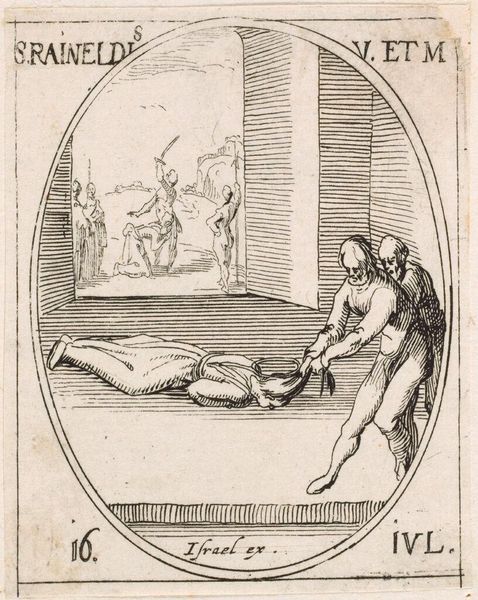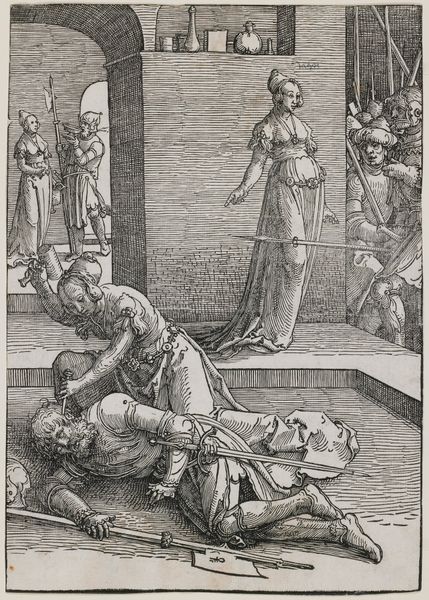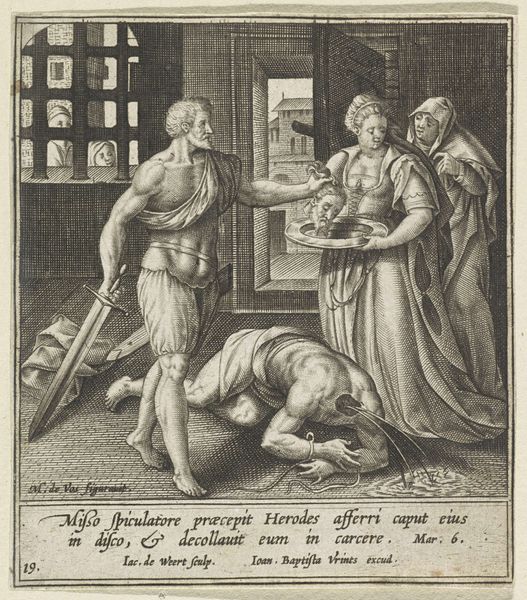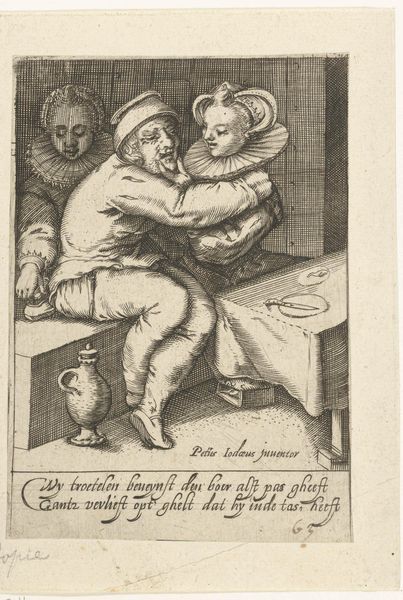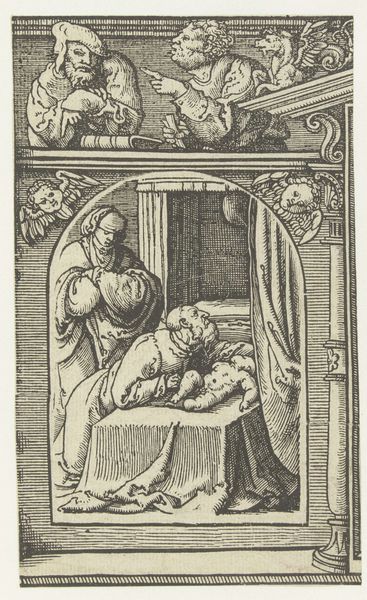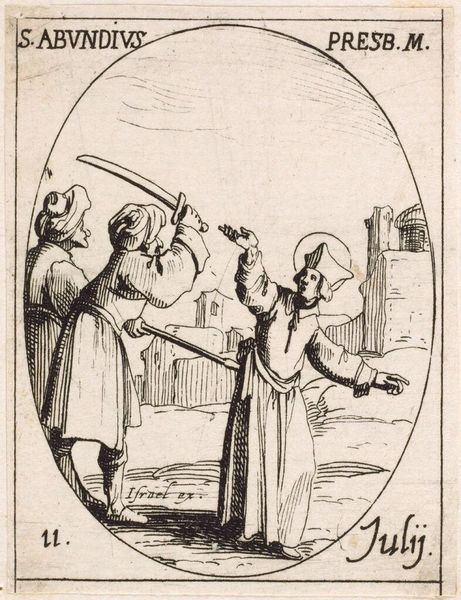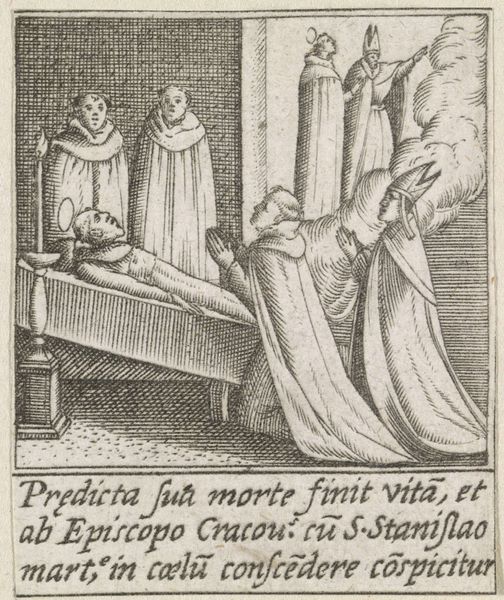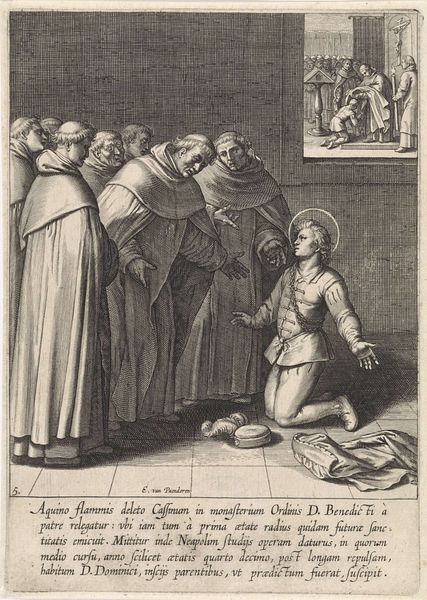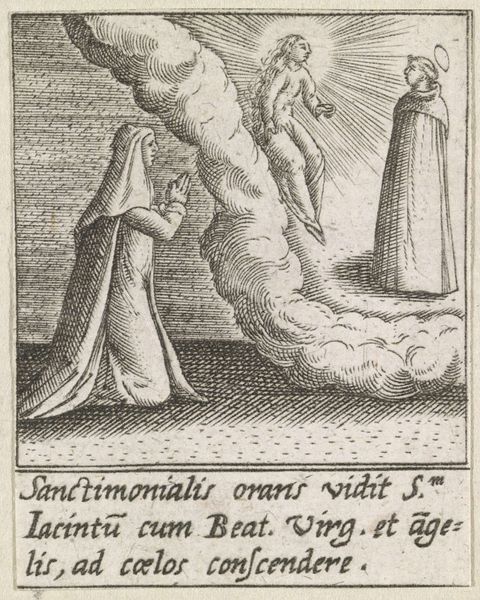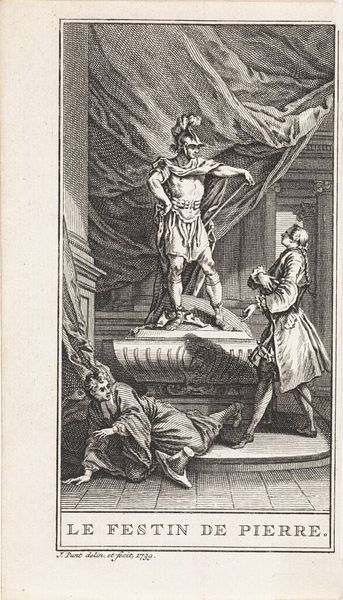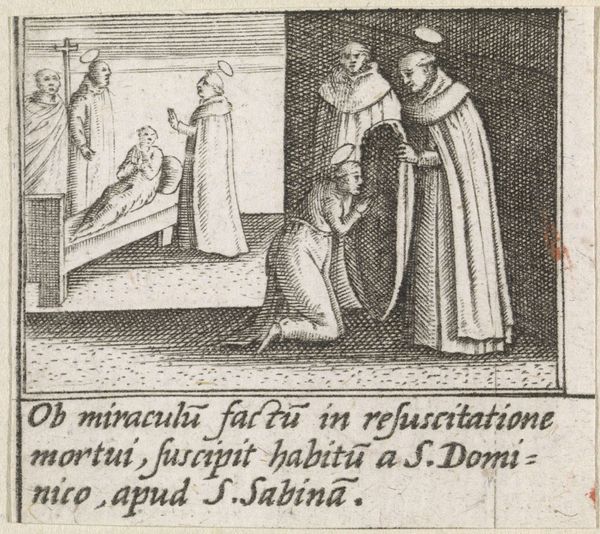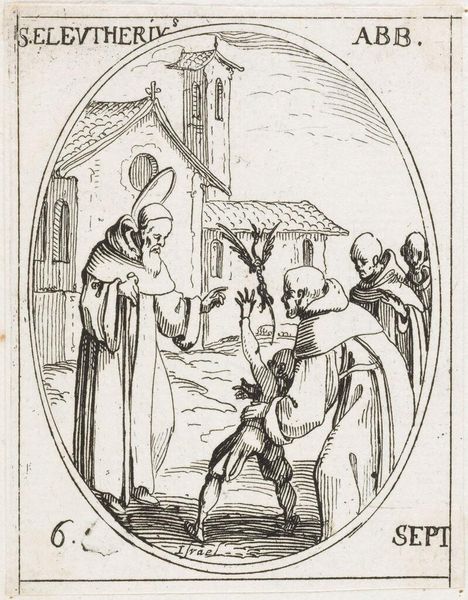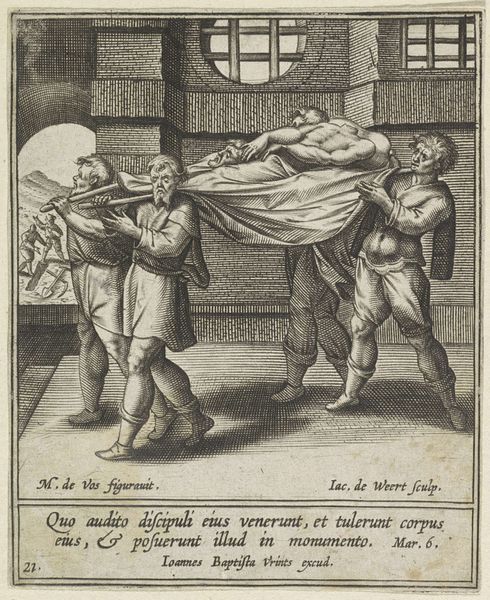
Miraculeuze genezing tijdens de begrafenis van de Heilige Hyacinthus van Polen 1595 - 1600
0:00
0:00
print, engraving
#
narrative-art
#
baroque
#
pen drawing
# print
#
pen illustration
#
pen sketch
#
old engraving style
#
history-painting
#
engraving
Dimensions: height 38 mm, width 46 mm
Copyright: Rijks Museum: Open Domain
This engraving, made by Johann Sadeler I around the year 1600, presents a miracle during the funeral of Saint Hyacinth of Poland. It's created using a technique that allowed for the relatively quick reproduction of images. Consider the process: lines are incised into a metal plate, likely copper, with a tool called a burin. Ink is then forced into these lines, and the surface is wiped clean. When paper is pressed against the plate, the image transfers. The sharp, precise lines give the scene its distinctive look. Engravings like this were essentially a form of mass media. While the artist required skill, the process leant itself to replication, meeting a demand for religious imagery and spreading stories of saints and miracles to a wide audience. The image itself, with its depiction of resurrection, speaks to the social anxieties of the time, offering solace through faith made accessible through these mechanically produced images.
Comments
No comments
Be the first to comment and join the conversation on the ultimate creative platform.
